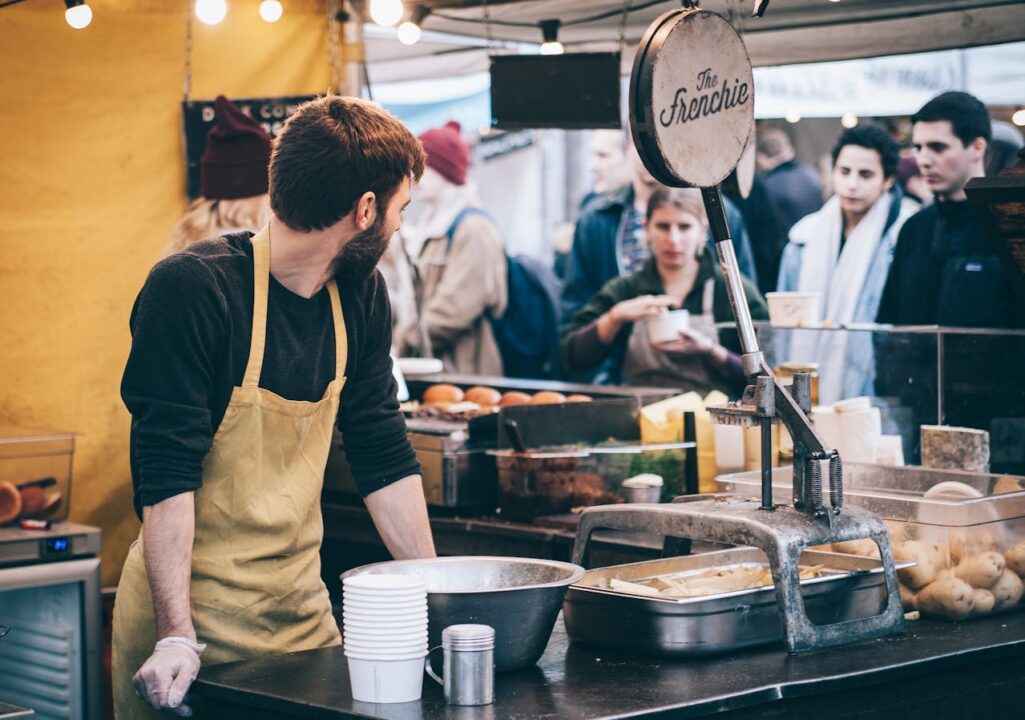If you love cooking and have a few recipes people rave about, you’ve probably thought, “Could I turn this into a business?” The idea of selling your food sounds exciting, but then reality hits—starting a food business must be expensive, right?
Not necessarily. You don’t need a fancy restaurant, a food truck, or a huge loan to get started. Many successful food businesses start small and grow step by step. The trick is proving people will pay for your food before you spend a fortune on equipment, rent, or staff. Let’s break down how you can do just that.
Start Small and Test Your Idea
One of the biggest mistakes new food entrepreneurs make is going too big too fast. Renting a commercial kitchen, buying expensive equipment, or launching a restaurant before knowing if people actually want your food is a quick way to go broke. Instead, start small and test your idea first.
Many well-known food businesses started right at home. A baker might begin selling cakes from their kitchen, a pizza maker might use a portable oven in their backyard, and someone with a great hot sauce recipe might bottle it up and sell it at local markets.
The goal here is simple—make sure people are willing to pay for your food before you invest too much money. If your product is good, word will spread, and you can grow without drowning in expenses. If you’re looking for other low-cost side hustle ideas, check out how one person turned an online hustle into $15K.
Build an Online Presence Before Selling
You don’t need a website on day one, but social media is a must. Platforms like Instagram, Facebook, and TikTok let you showcase your food, build a following, and create hype before you even start selling.
Posting delicious food photos and videos works wonders. Engaging with followers, responding to comments, and building excitement can turn online fans into paying customers. If you’re serious about marketing your food business, take a look at why social media is key for side hustles.
One of the best strategies? Pre-orders and paid reservations. Instead of making a bunch of food and hoping it sells, let people order in advance. This eliminates waste, lowers your risk, and guarantees that everything you make is already sold.
Sell Without a Restaurant: Pop-Ups, Markets, and More
You don’t need a brick-and-mortar location to sell food. Pop-ups are a low-cost way to get your food in front of customers without committing to rent. Partner with a local café, brewery, or event space and offer your food for a limited time.
Pop-ups are great for building buzz—people love an exclusive event. You can use the opportunity to test menu items, get real customer feedback, and start growing a loyal following.
Farmers markets and local fairs are also fantastic for exposure. Many food businesses start at markets, get a steady customer base, and then transition into larger operations when the time is right. If you’re looking for other creative ways to make extra money, check out this $21K side hustle success story.
Use What’s Already There: Partnerships and Ghost Kitchens
If you don’t want to start from scratch, partnering with existing businesses is a smart move. If you bake, team up with a local coffee shop and sell your pastries there. If you make sauces or pre-packaged meals, find a store willing to stock your products.
Another option? Ghost kitchens. These are commercial kitchens that exist only for delivery food. Instead of worrying about a dining area and waitstaff, you just focus on cooking and getting your food out the door. Many restaurants and food startups use ghost kitchens to test their concepts before opening a full-fledged location.
Free (or Almost Free) Ways to Market Your Food Business
Marketing doesn’t have to be expensive. Some of the best ways to promote your food business cost little to nothing.
- Google My Business – Helps you appear in local searches when people look for food near them.
- Social media engagement – Encouraging customers to post pictures, leave reviews, and tag your business is free advertising.
- Influencer collaborations – Team up with food bloggers or local influencers. A single post from someone with the right audience can bring in a ton of new customers.
For even more smart side hustle strategies, check out how to use the 80/20 rule to grow your business.
Pricing Your Food for Profit
A lot of new food entrepreneurs undervalue their work. If you don’t price your food correctly, you might find yourself working harder and harder without actually making money.
Here’s what to do:
- Calculate your costs – Include ingredients, packaging, labor, and overhead expenses.
- Set a profit margin – After covering costs, your pricing should still leave you with a solid profit.
- Test pricing with customers – If people keep buying, you’re in the right range. If they hesitate, you might need to adjust.
Managing Inventory: Avoid Wasting Food (and Money)
One of the biggest challenges in the food business is managing ingredients. Order too much, and you waste money. Order too little, and you miss out on sales.
Start with small batches and track what sells. Use simple spreadsheets or inventory apps to keep things organized. A well-managed inventory means more profit and less stress.
Having strong relationships with suppliers also helps. If you build a good rapport, you might get better pricing, discounts, and priority service when you need ingredients fast.
Customer Service is Everything
A great meal gets people to come back, but amazing service turns them into loyal customers.
- Remember regulars and their orders.
- Offer a small freebie or thank-you note with orders.
- Be friendly, responsive, and make people feel valued.
People don’t just buy food—they buy an experience. The better that experience, the more likely they are to tell friends, leave reviews, and come back again.
Legal Stuff: Get Your Licenses in Order
Before selling food, make sure you understand local laws. Some states allow home-based food businesses under cottage food laws, while others require a commercial kitchen.
Check what licenses, permits, and health regulations apply to your area. If you’re selling at markets or pop-ups, you might need special approvals. Avoiding legal trouble from the start will save you headaches later.
The Bottom Line: Start Smart, Scale Up
Starting a food business on a budget isn’t just possible—it’s how many of the best businesses began. Start small, focus on making amazing food, and grow step by step.
You don’t need a restaurant. You don’t need a huge budget. You just need a smart plan, great food, and the hustle to make it happen.
So, what’s stopping you from getting started? Take that first step, and before you know it, you could be serving up something incredible.







